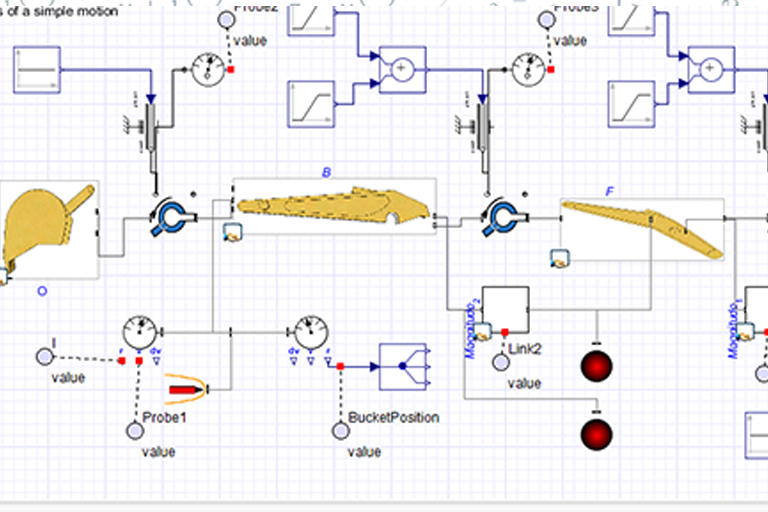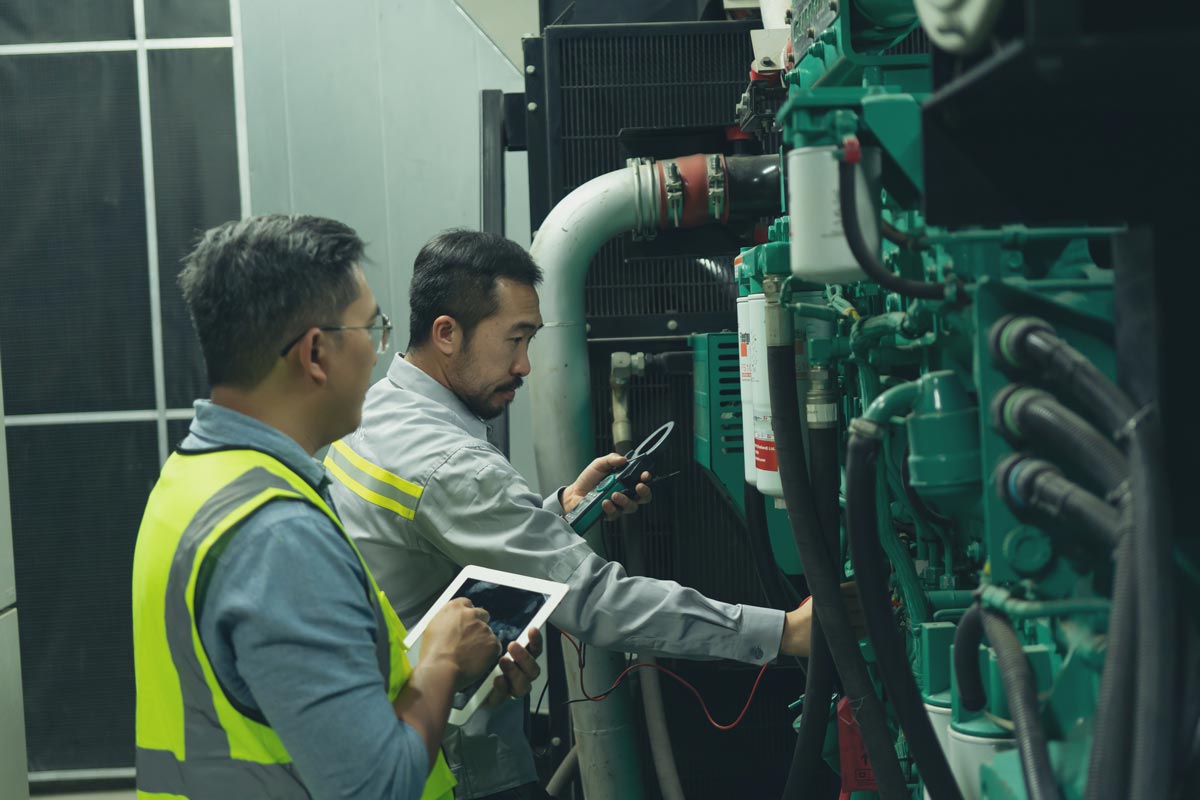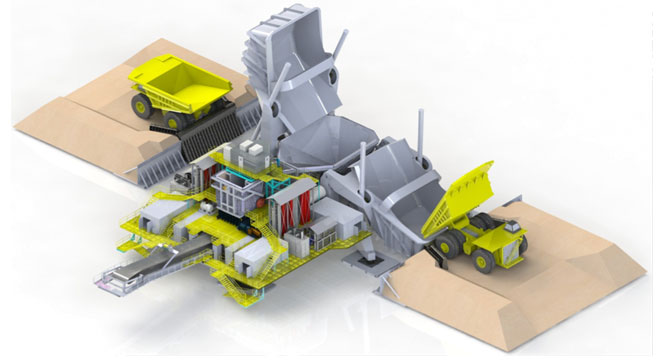

Maple
Powerful math software that is easy to use
• Maple for Academic • Maple for Students • Maple Learn • Maple Calculator App • Maple for Industry and Government • Maple Flow • Maple for Individuals






You can capture and simulate all the physical elements of your systems in a single modeling environment. MapleSim includes over 900 built-in components from many different domains to support rapid prototyping for exploring control strategies.
Machine builders use virtual prototyping during product development for huge benefits to the project.
MapleSim makes it simple to build a system-based model that responds to simulated conditions that mimic the real world and shows the interactions across many engineering domains.


Simulations built with MapleSim can:
Actuate the model with a variety of MapleSim’s standard components including hydraulic actuators, electric motors and pre-defined motion profiles, and simulate changes in cycle times and operating conditions.
Analyze the mechanism’s response as part of optimizing performance, component sizing, eliminating vibrations, and understanding design interactions.
Go deeper into your product design using MapleSim’s built-in apps for common analytical methods such as vibration analysis, sensitivity analysis, and optimization (using Monte Carlo simulation or parameter sweeps). Access to the full programming environment lets you build your own custom analysis.
Click here to see more of the interactive analysis templates included.
Identify and fix issues earlier in the product development cycle, when they are much easier and less expensive to correct.
Extend the use of your virtual prototype using MapleSim Insight allowing non-experts to explore, visualize, and test new scenarios
Use the built-in analysis tools to track down design flaws arising from unexpected interactions between different domains, and even prevent these problems from occurring in the first place.
Minimize trial-and-error and reduce time spent in testing. MapleSim provides a series of add-on connectors to common automation software to enable virtual testing and validation of PLC code generation
Fast-track your problem solving: Maplesoft offers full-service solutions for diagnosing, fixing, and optimizing machine performance from Maplesoft Engineering Solutions. Our experts work with you to understand your project, and then build an initial digital model for you.

In the mining industry, mined ore gets transported by super-heavy duty trucks from the extraction site to a processing plant where it is crushed into smaller sizes. To avoid trucks travelling long distances, FLSmidth wanted to develop a Dual Truck Mobile Sizer (DTMS) that could receive materials from 2 trucks at once and be relocated when needed.
The size and scale of the equipment made it impractical and costly to try out different prototype configurations on-site.
Multidomain system-level studies of the DTMS in MapleSim provided early insight into its overall dynamic behaviour, leading to the implementation of significant improvements in the structure and dynamic response.


Web tension is managed by the torque applied to the center of the roll by a brake, clutch, or drive. Tension controllers can regulate this torque, to make any necessary correction or adjustments throughout the process, allowing for continuous production. The use of a spring-loaded dancer allows the controller to adjust the tension based on the changes in the roll radius as it unwinds.
The MapleSim Web Handling Library provides components to generate an accurate model for the unwinding zone.
Simulations are completed in minutes, not days, and allow engineers to quickly test multiple designs for brake response, web speed, and more.
In paper handling lines, the web tension must be kept within a certain threshold. The required brake torque is calculated by a controller based on the rotation angle of the dancer arm.
In this way control engineers can generate high-fidelity simulation data of the web tension applied across various tension zones, reducing the time and cost needed for developing physical prototypes.
Expand your modeling capabilities into specialist fields with the MapleSim add-on libraries
Maplesoft Engineering Solutions can provide you with expertise and technology to meet your project requirements quickly. Professional services include product design validation and optimization; code development for in-the-loop simulations; analysis & design calculation tools; and customized training.
Turnkey solutions from Maplesoft Engineering Solutions offer a low-effort way to test out virtual commissioning for your own projects by fast-tracking delivery of an initial model – no previous modeling expertise is required.
The physical component blocks include functionality for:
The signal-based component blocks include: